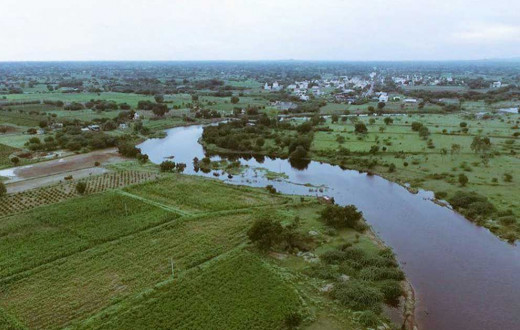Water shortage is considered as the most dangerous outcome of environment degradation and India has already started to feel the impact of the water crisis. With a rise in population, India has witnessed a substantial reduction in the availability of fresh water by 25 percent in the last 20 years. The struggle for water is evident in several Indian villages, some which are even marked as drought-prone.
One such village is Kapsi in Maharashtra, India. Hit with dry spells and no provision for storing water, it was one of the villages which were declared ‘drought-prone’. However, things changed for its villagers when they were introduced to the rainwater harvesting methods under The Art of Living’s water harvesting project.
At a time, when villages were bearing the brunt of not having an alternate plan to source water, Art of Living volunteers were training thousands of villagers and youth in water harvesting projects in their communities.
The success story of Kapsi village is a testimony to it. The villagers of Kapsi today have a different tale to tell. The village, now, is an example of how the practice of rainwater harvesting can reverse a water crisis situation in India.
Restoring indigenous water supply mechanism
As part of the initiative, the volunteers are engaged in restoring indigenous water supply mechanisms in rural India by harnessing village ponds, recharging wells and maintaining groundwater levels among other methods.
Apart from conserving water for use during dry periods, the initiative also reduces the possibility of flash floods. In the absence of any harvesting mechanism, excess rainwater flows away. So, the farmers are forced to look for groundwater sources for irrigation and other purposes during dry days. This amplifies the use of groundwater supplies and lowers water table drastically.
Several villages in India, where The Art of Living has initiated this work, now have indigenous mechanisms for rainwater harvesting, which helps in creating a grassroots model for environmental sustainability.
Roof water harvesting a viable solution for all
Rooftop rainwater harvesting is not new. In Rajasthan and Gujarat, people have managed to survive the worst famine situations with only 150mm rainfall in some years.
The principle of rainwater harvesting from rooftop is to collect and store whatever amount of rainwater that could be stored, and divert the rest for recharging groundwater.
A doctor brings an end to water woes in Kapsi
“My native village was always drought-prone and suffered from low rainfall. Over the years, the problem became worse. The rain became less frequent, rivers were drying up and at least 50 percent of villagers had already abandoned the village to migrate to nearby cities,” says Dr Madhav Pol, the man who inspired the villagers of Kapsi village in Maharashtra to fight the water crisis.
Community conflicts and fights, lack of food, farmer suicides were the results of the water crisis. Drying up of nearby river was tearing apart the social fabric of the village. The locals would often share their challenges of water shortages when they visited Dr Pol. One day, Dr Pol decided to do something about it.
“I first taught the villagers The Art of Living’s Rural Happiness Program – a personal development yoga and meditation workshop. After the program, they felt uplifted, energized and motivated to work towards a change. Though the gram panchayat was initially reluctant, I took the leaders to Anna Hazare’s village, Ralegaon Siddhi, to show them how the village used sustainable water management systems to overcome the water crisis there. Then, everyone joined in,” shares Dr Pol.
River rejuvenation of water bodies around Kapsi village started in 2001. Dr Pol, along with villagers started with the construction of groundwater recharge structures.
“For two years, until the completion of the project, I went to the village almost every day. This was in addition to my ongoing medical practice. Many villagers were inspired by this and joined in,” shares Dr. Pol.
The river flowing near Kapsi was revived in 2003. Bore wells were abundant with water again. The ecosystem was being restored again, birds and animals were returning back and the catchment area was returning to its lush flora again.
“So far, we have successfully transformed five villages from being water scarce to water abundant and are currently working in 40 villages in Satara. But, most important of all, the village was not just a village now, it was a strong community. The project transformed the locals into active citizens of change,” reminisces Dr Pol.







